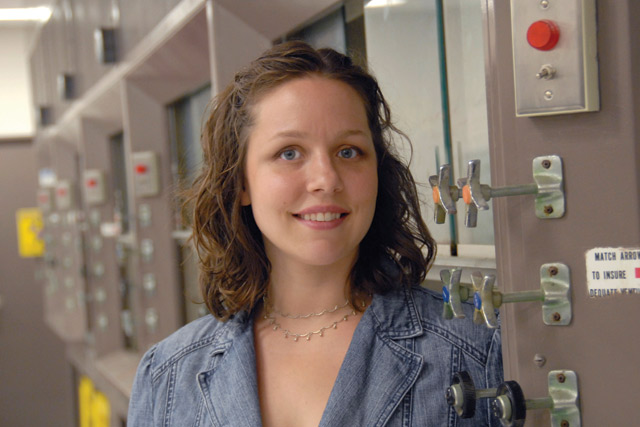5 Questions With . . . Erika Taylor

In this issue, we ask 5 Questions to. . . Erika Taylor, assistant professor of chemistry and chair of the 35th Peter A. Leermakers’ Committee.
Q. How did you get involved in biofuel research?
A.There seemed to be a compelling need for more scientists to look for alternatives to biofuel carbon sources beyond the ones that have already been researched, corn being a common, but problematic one.
Q. Can you explain what lignin is?
A. Lignin is the second most abundant polymer on the planet (the most abundant polymer is cellulose). Lignin is interwoven into trees, along with cellulose and hemicellulose, two sugar polymers. Lignin provides the structural rigidity.
Q. Why are you exploring lignin as a possible carbon source of biofuel?
A. more than 50 millions tons of lignin are produced each year. It is an abundant waste product of both the biofuel and paper industries. Lignin is also found in municipal waste. My hope is to take the lignin and develop a means for recycling it into a biofuel so that we will produce less waste overall. Also, if this waste can be converted, there will be less need to grow other crops for the production of biofuels.
Q.What has your research focused on concerning the chemical makeup of lignin?
A.Many researchers are trying to find ways to get bacteria to make biofuels, and they are always using sugar as the starting material for making these biofuels. The research in my lab is focused on developing a way to turn depolymerized lignin into a food source for bacteria, which would then allow it to become a new starting material for biofuel production.
Q.What is the next step in the process? Have you contacted corporations about your research?
A.Right now we are still in the exploratory stages of this research, but I have been developing contacts with other researchers in this area. On May 7th many of these researchers will be here on campus to participate in the 35th Peter A. Leermakers Symposium which I organized and is entitled “Green Energy and Biofuel Technology.” I am very excited about the research that will be featured on that day.

